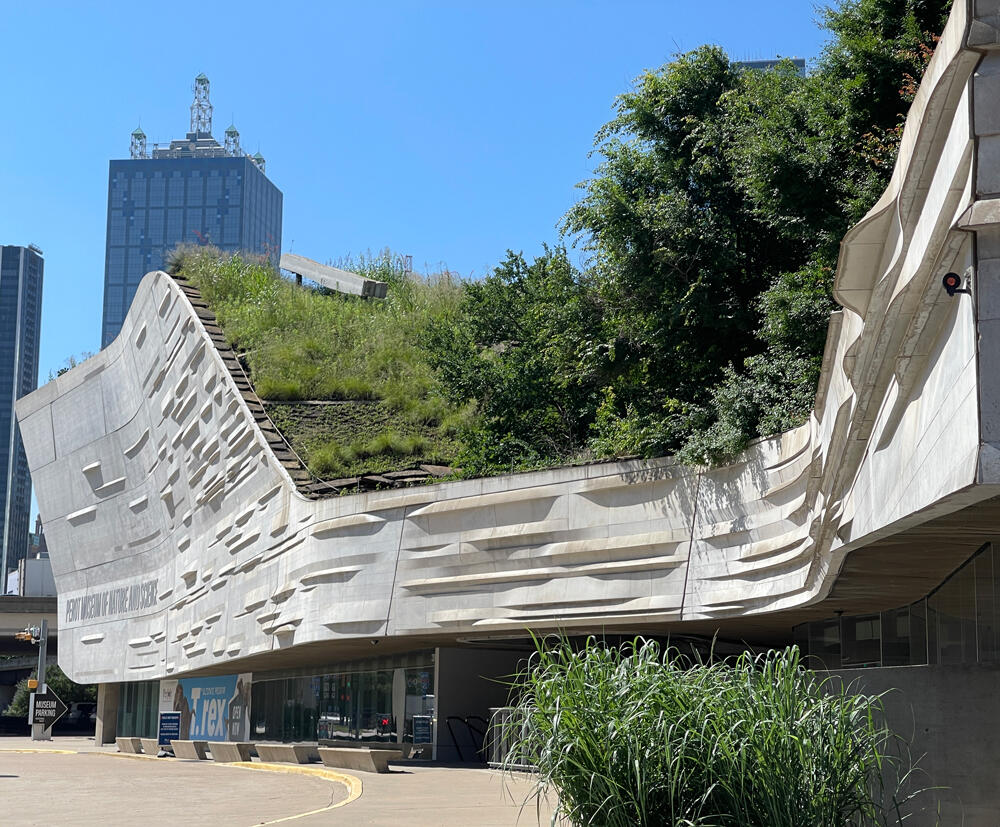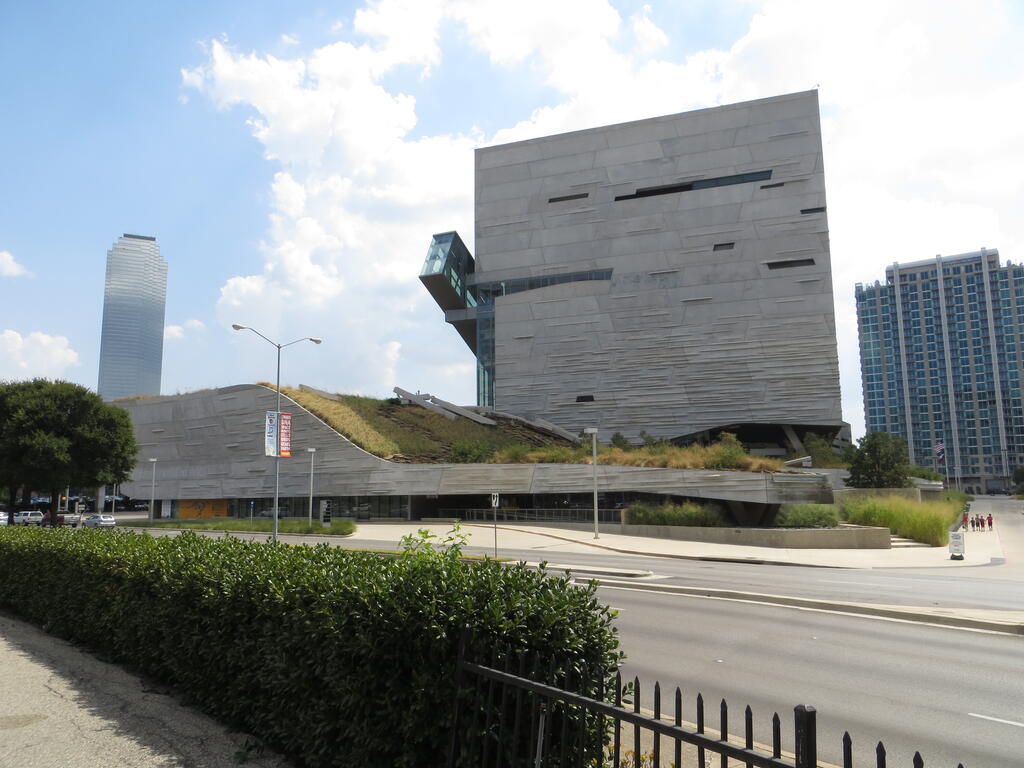





Dallas, TX is no stranger to scorching summer heat and the downtown can be several degrees hotter than the surrounding suburbs and rural areas. For this reason, Dallas introduced a green 'cool roofs' initiative back in 2013 to combat the urban heat island effect as part of the Green Building Ordinance. Since then, new buildings in Dallas are required to have cool roofs, which reflect solar heat, reduce the ambient temperature around the building, and can help reduce indoor temperatures to help cut energy costs. These roofs need to use roofing materials that reflect solar heat on at least 75% of the roof's surface; have a vegetated roof that covers at least 50% of the area; or use a combination of the two.
Among many notable projects is the Perot Museum of Nature and Science, which features a “living roof” that not only helps mitigate heat but also captures rainwater for irrigation. This vegetated roof, provided by American Hydrotech, Inc., feature the Intensive Garden Roof Assembly that covers 6,000 square feet and utilizes GardNet for stabilizing the growing media on part of the roof's steep slope area. The green roof is also more than just a visually interesting building, it also serves as an educational illustration of the diverse biomes of Texas, from the deserts of West Texas to the prairies of Central Texas.
Fast forward to today, the Perot Museum proves to be thriving and continues its fight against the urban heat island effect. It is exciting to see that the living roof serves as both an educational tool and a practical solution for urban heat management. Projects like these highlight Dallas' commitment to integrating sustainable practices into its urban landscape.


